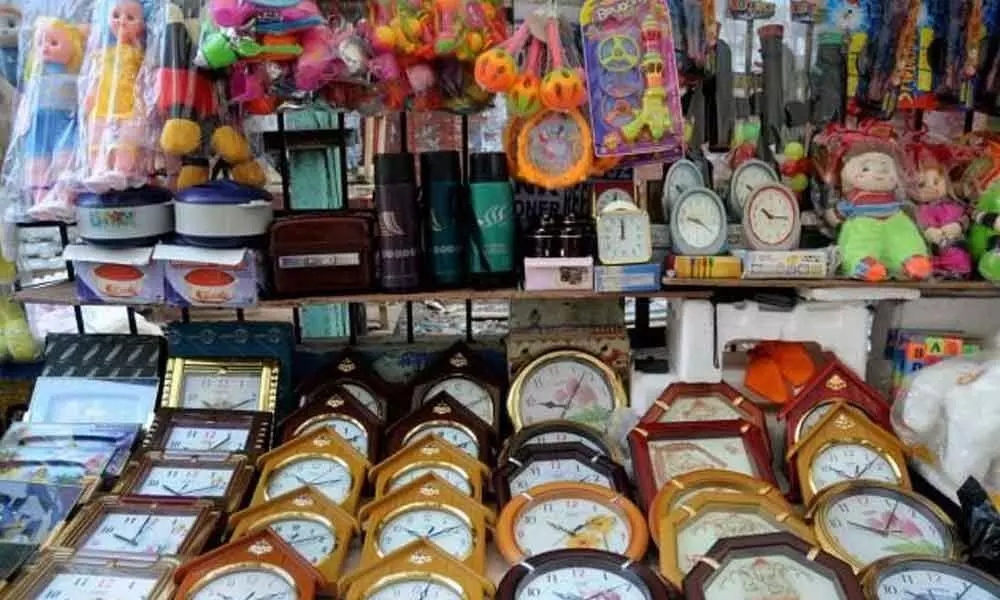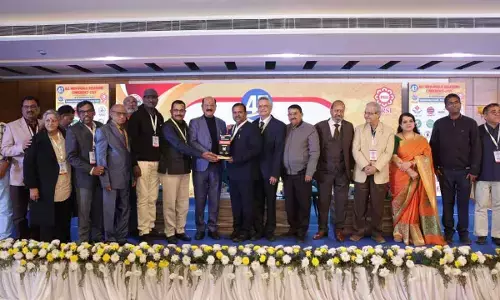Coining catchphrases cannot make India self-reliant

A lot has been said about the country’s need to be self-reliant, to become one of the biggest economies in the world and many such bunkums
A lot has been said about the country's need to be self-reliant, to become one of the biggest economies in the world and many such bunkums.
It is high time India's ruling political establishments stop creating delusions about self-reliance through clichéd sloganeering about import substitution.
They should understand that truth cannot be camouflaged by harping on unusual hype. India is languishing at a dubious 68th position in Global Competitiveness Index (GCI), which is neither shocking nor unexpected since there have hardly been any pragmatic efforts in the country by ruling political dispensations, the bureaucracy, the industry and the research institutions to inculcate culture of innovation and invention.
Today, seven decades since Independence, India has a very few products or inventions which it can claim as its own. This is reflected in the fact that apart from GCI, India is also positioned many rungs down the ladder in Global Innovation Index (GII).
The industry in India always prefers to be in the comfort zone of replication or cloning of outsourced or existing technologies - like the pharma sector – seldom indicating an inclination to innovate.
An eloquent narrative of this culture is evident from the pittance - ranging from a decimal point to less than a single digit - that is infused into research and development, both by the government and the industry.
The big and obvious question is; why do India's consumers prefer or rather forced to opt for foreign products? Is it because they are not manufactured in India? Or, is it because of quality standards? The answer is obvious.
India's incompetence in innovation and even in cloning products – specifically in the manufacturing sector - is taking a heavy toll on the country's economy. For instance, despite having the resources, India is paying a heavy price due to scarcity of import substitutes.
Patriotism and nationalism are necessity, but does it mean compromising on quality of the products and deficiencies and dearth in indigenisation. Consequently, the country has been incurring huge expenditure on imports. The total value of imports has only been scaling up every year.
India's imports from the world increased by 23% from around $391 billion in 2015 to $480 billion in 2019. Manufactured products including electrical machinery, equipment and accessories, mechanical appliances, organic chemicals, fertilisers, plastic products and iron and steel, apart from natural or cultured pearls comprised a major chunk of India's imports, accounting for around $224 billion i.e., 32.2% out of total imports of all products from the world valued at $480 billion during 2019.
In addition to this, the country is importing a cumulative $10billion worth of even basic products like spoons and cutlery, rubber and aluminum articles. Are these factors a reflection of incapability and lack of know-how and expertise?
China is the biggest source of imports for India. Despite the consistently varying degrees of diplomatic relationship between India and China, one persisting factor is the ubiquitous presence of Chinese brands in the Indian markets.
Irrespective of the fluctuating and uncertain relationship – cordial, acrimonious or smoldering – the fascination for Chinese products ranging from simple household appliances, electronic products and mobile phones to complex machinery and equipment has always prevailed in Indian markets.
The fancy is reflected in an analysis according to which imports from China was reportedly valued at around Rs 4,000 worth of goods for every Indian. During 2019, China's share in India's total imports at $480 from the world was around 14 % at $68 billion.
Electrical machinery and mechanical appliances, organic chemicals, plastic products, iron and steel appliances and products vehicle parts and accessories contributed a major chunk of China's exports to India amounting to a cumulative value of around $56 billion which was around one-third I.e., 32% of the total imports of the same products from the world at $164 billion.
Significantly, China's exports of these products also accounted for a large chunk i.e., 80% of its total exports of all products to India which was around $70 billion. In addition, China also garnered a lion share- $3billion during 2018-19 - in India's imports of telecommunication equipment, specifically smart phones and accessories.
While the huge dependence on imports of specifically manufactured products has proved to be a bane on economic development and strain on the country's financial prospects, India's exports have totally failed to offset the imbalance in trade by innovating and increasing its range of products.
An evaluation of India's exports substantiates this factor. India's share in exports vis-à-vis world exports has been languishing at an average of 1.7% during 2015-19. India's total exports to the world in 2019 were around $323 billion i.e., 48% of its total imports valued at $480 billion which also indicates an overall trade deficit of $185 billion in 2018.
India's exports to China was $16 billion – i.e., around 30% of its imports from that country. India's trade chasm or deficit with China was a whopping $52 billion.
An evaluation of colossal trade deficit, stagnating exports across all sectors and ever-increasing imports points to India's deficiencies in the in research, innovation and value addition of products that could facilitate not just import substitution – to meet India's needs - but also enable the country to position its products in the highly competitive and quality savvy global arena.
Except for pharma – for which India is a leading exporter – other manufacturing sectors have been lagging behind due to want of impetus to raise the level of quality, performance and productivity and marketability.
Lack of competitive and innovation culture can be attributed to industry managements being content with status quo in production standards and the governments' lackadaisical attitude over priorities for promoting research and innovation.
The intention is explicit in India's R&D spend which is a ridiculous 1 percent. Countries like Japan, China, South Korea are high on innovation and competitiveness index, and also on the exports list, due to the top priority they accord to research and development.
India should learn lessons and replicate this culture, if it has to halve or considerably reduce the imports and augment import substitution.
This objective can be achieved by introspecting deficiencies and prioritising focus on sector-specific research and development through policies and adequate funding and not with mere alliterative platitudes.

















